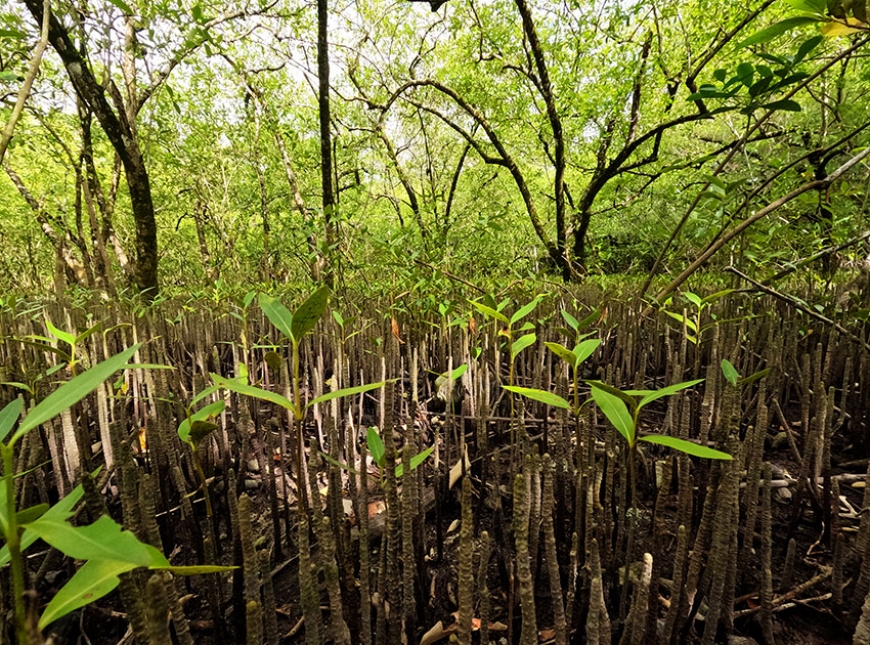In partnership with the Department of Climate Change and the Constance Ephelia Resort, Nature Seychelles' LEAP (Local Empowered Area Protection) project at Cap Ternay is neck-deep into conducting a comprehensive ecological study of the RAMSAR site at Port Glaud, which has extensive mangrove habitats and is one of the best mangrove wetlands on Mahé, supporting all seven species of mangroves in Seychelles. The study will provide a more accurate assessment of the site's health and status, which was last done a decade ago.
“We have completed the perimeter mapping of the site and are now conducting quadrat-based surveys in the area,” says LEAP conservation officer Rafaela Gameiro. “We check for the different mangrove species as well as identify other plants and animals. We estimate the percentage of invasive flora, tree biomass, abundance of seedlings and saplings, and canopy cover. We also check for the presence of pollution."
So far, the team has covered 400 square metres while navigating through challenging terrain by hiking, wading in water and mud, and using paddleboards.
The LEAP team is being assisted by volunteers under the NGO's mangrove training programme, who have been a great help.
Ophelie Oustrain is the third volunteer to join the programme so far. Ophelie, who previously worked in finance, is pursuing a career in the environmental sector. The allure of contributing to mangrove and coastal ecosystem conservation was therefore irresistible.
“I am fascinated by mangroves as they can thrive in harsh and constantly changing conditions and still provide numerous ecosystem services,” she says. “I was thrilled to be selected to take part in the mangrove volunteer programme with Nature Seychelles to gain much-needed experience in the field.”
Every site visited had its own personality, and while some may have posed challenges to access, the sense of accomplishment upon reaching them made it all worthwhile, she says.
"Walking in a wetland to map it gives you the feeling of being an explorer like no other!" You don’t know what you will come across, you don’t necessarily know how extensive or small it is, which flora you will find or what will get into your shoe.”
In addition to mapping the RAMSAR site at Port Glaud, the team also visited other wetlands around Mahé such as the Roche Caiman wetland (Bird Sanctuary), Barbarons and Grand Anse, Anse a la Mouche, Mare aux Cochons and Police Bay.
“The first week started with presentations and field visits. Things took another turn when we visited Anse Barbarons. This is definitely not the easiest place to walk through. You may not know where you will put your feet nor when you will sink. You will sink into the mud at some point. That’s part of the fun!”
“From then on, we visited wetlands either by hiking or paddleboarding, and I absolutely adore the diversity of places we’ve visited, each very unique,” she concludes.

